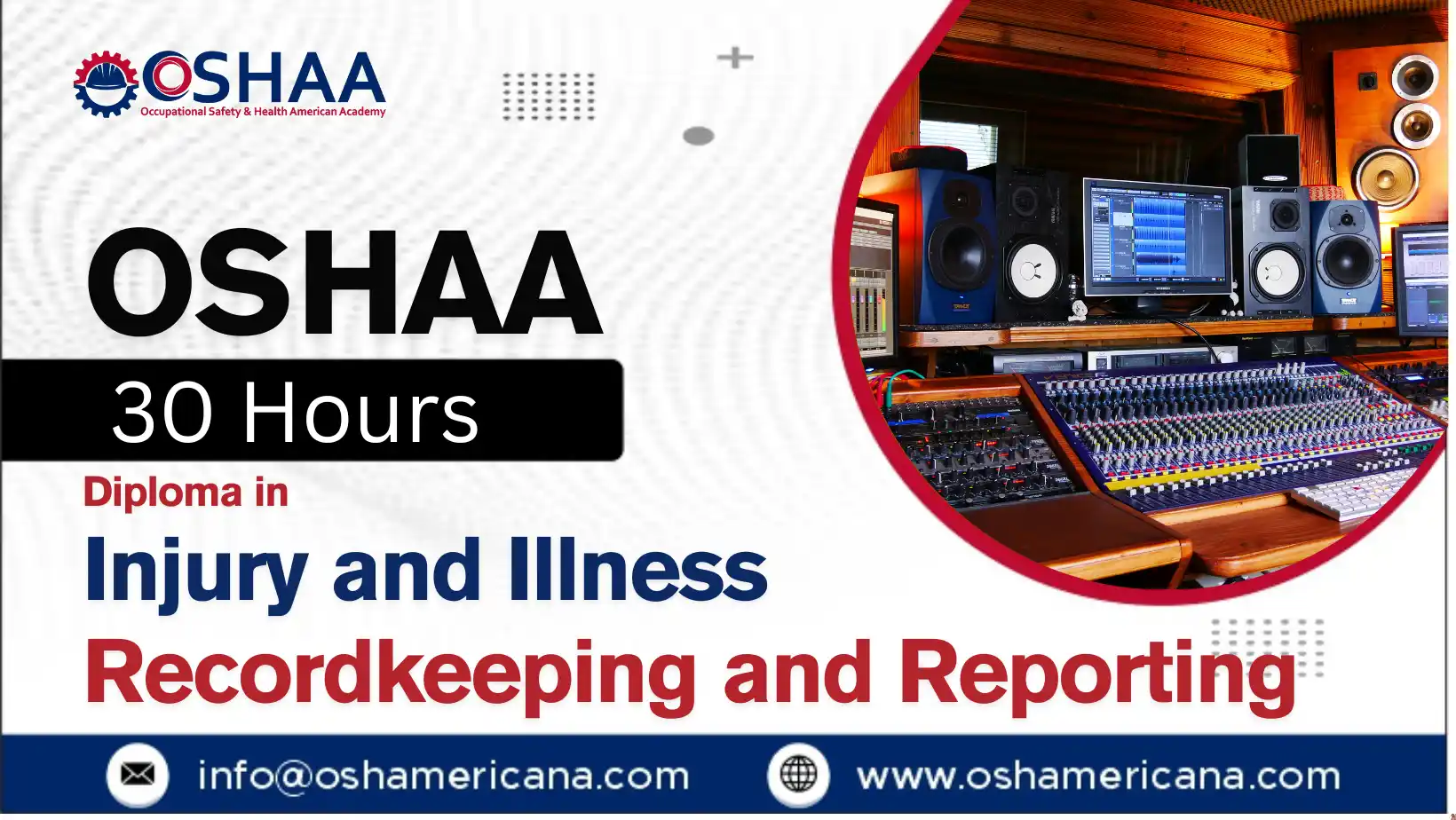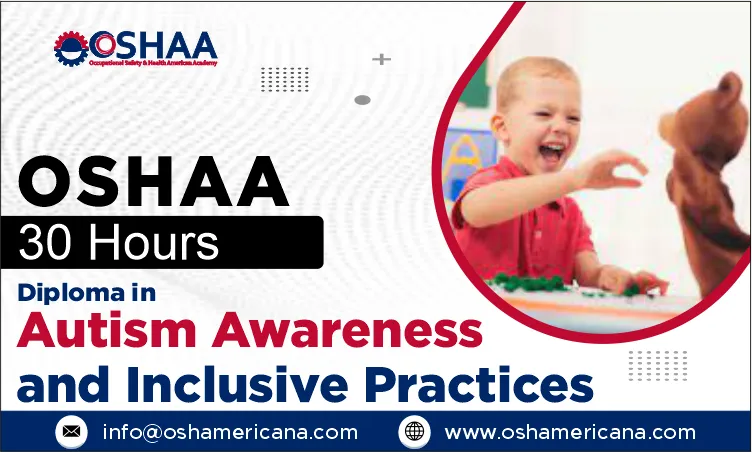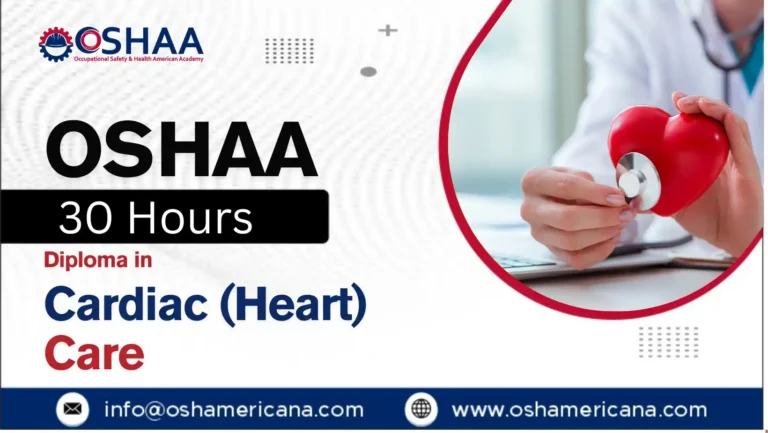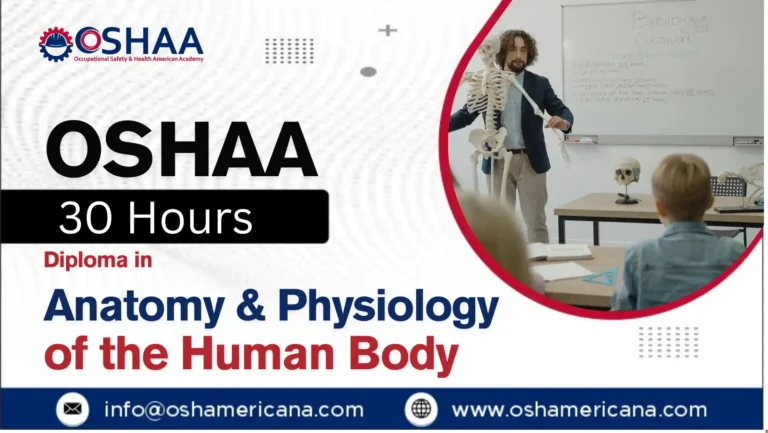The OSHAA 30-Hours Professional Diploma in Injury and Illness Recordkeeping and Reporting is a comprehensive programme developed to provide participants with the essential knowledge and skills required to effectively document, manage, and report workplace injuries and illnesses in accordance with current health and safety regulations.
Accurate recordkeeping is a cornerstone of workplace health and safety. This diploma is specifically designed to guide participants through the principles and practices of regulatory compliance, data recording, reporting requirements, and best practices for workplace incident documentation. Through a structured and practical curriculum, participants will learn how to ensure transparency, meet legal obligations, and contribute to safer working environments.
A key component of the course is its emphasis on regulatory alignment, particularly with frameworks such as OSHA standards and other relevant local or international guidelines. Participants will gain practical insight into how accurate reporting not only ensures compliance but also supports strategic safety planning and improves organisational performance.
This diploma is particularly valuable for those involved in health and safety management, human resources, operations, or compliance roles. Participants will learn how to manage incident logs, prepare legally sound documentation, and interpret data to reduce workplace risks. The course also includes applied exercises and case studies, enabling participants to practice their skills in realistic scenarios.
The OSHAA 30-Hours Professional Diploma in Injury and Illness Recordkeeping and Reporting provides a vital foundation for anyone involved in occupational safety, equipping participants with the ability to uphold compliance and support organisational wellbeing through precise and effective data management.
OSHAA 30-Hours Professional Diploma in Injury and Illness Recordkeeping and Reporting
Study Units
Learning Outcomes
Introduction to Workplace Injury and Illness Recordkeeping (3 hours)
- Understand the purpose and importance of injury and illness recordkeeping
- Identify the core components of an effective recordkeeping system
- Recognise the role of documentation in workplace safety management
- Explain how accurate records support regulatory compliance and incident prevention
Legal and Regulatory Frameworks for Reporting (4 hours)
- Understand the legal obligations related to injury and illness reporting
- Identify key national and international regulations governing workplace safety data
- Differentiate between reportable and non-reportable incidents
- Apply relevant legislation to real-world reporting scenarios
Classification of Work-Related Injuries and Illnesses (3 hours)
- Distinguish between different types of work-related injuries and occupational illnesses
- Accurately classify incidents based on severity and outcome
- Understand the importance of consistent classification for reporting and analysis
- Apply classification standards to documentation procedures
Documentation Standards and Recordkeeping Procedures (6 hours)
- Learn how to complete required documentation accurately and clearly
- Understand the use of forms, logs, and electronic systems in recordkeeping
- Develop best practices for maintaining and organising records
- Apply standardised procedures to ensure compliance and data integrity
Recording and Reporting Requirements under OSHA and Other Standards (4 hours)
- Identify the specific forms and deadlines required by OSHA and other regulatory bodies
- Understand the criteria for OSHA-recordable incidents
- Accurately complete reports and maintain required logs
- Apply national and industry-specific standards in various workplace contexts
Incident Investigation and Root Cause Analysis (5 hours)
- Understand the purpose and process of effective incident investigation
- Identify root causes of workplace injuries and illnesses
- Develop skills to document findings and recommend preventative measures
- Integrate investigative outcomes into ongoing safety improvements
Confidentiality, Data Protection, and Ethical Considerations (3 hours)
- Recognise the importance of maintaining confidentiality in injury and illness records
- Understand data protection regulations applicable to workplace reporting
- Apply ethical principles to sensitive documentation and communication
- Develop practices that protect both personal data and organisational integrity
Using Records to Identify Trends and Improve Safety (2 hours)
- Analyse recorded data to identify patterns and recurring risks
- Use documentation to inform strategic safety decisions
- Develop action plans based on trend analysis
- Support a proactive safety culture through data-driven interventions
Course Benefits – OSHAA 30-Hours Professional Diploma in Injury and Illness Recordkeeping and Reporting
- Gain a thorough understanding of legal and regulatory requirements for workplace injury and illness reporting
- Develop practical skills to accurately document, classify, and report work-related incidents
- Enhance the ability to support organisational compliance with OSHA and other relevant standards
- Learn how to maintain clear, confidential, and well-structured records that meet audit and inspection criteria
- Acquire tools to investigate incidents effectively and conduct root cause analysis
- Use recordkeeping data to identify safety trends and implement preventative measures
- Strengthen workplace health and safety protocols through structured documentation practices
- Improve internal communication and accountability around incident management
- Support continuous improvement in safety performance and risk reduction
- Obtain a recognised professional qualification that boosts credibility in health, safety, HR, or compliance roles
The OSHAA 30-Hours Professional Diploma in Injury and Illness Recordkeeping and Reporting is designed for individuals who are responsible for, or involved in, workplace safety documentation and compliance. This course is particularly suitable for:
- Participants working in health and safety, risk management, or compliance roles
- Individuals responsible for maintaining workplace injury and illness records
- Human resource professionals managing incident reporting and employee safety data
- Supervisors, managers, and coordinators involved in health and safety oversight
- Participants preparing for audits, inspections, or regulatory reviews
- Those seeking to strengthen their organisation’s safety culture through accurate and ethical recordkeeping
- Individuals pursuing professional development in occupational safety and health
This diploma provides essential knowledge and skills for maintaining legal compliance, supporting effective incident management, and contributing to a safer work environment through precise and informed reporting practices.







